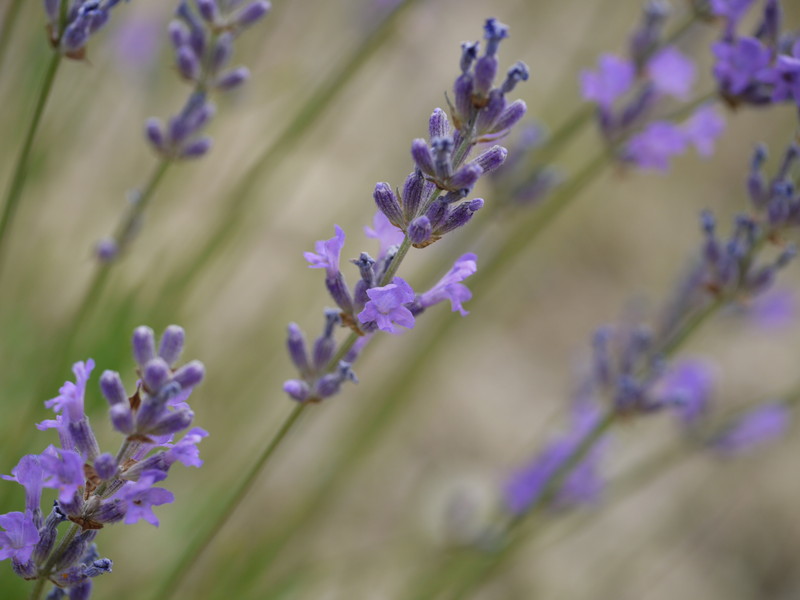Lavender
Lavandula angustifolia Mill.
Lamiaceae
Lavender, the emblem of Drôme, offers the season’s first tourists fragrant fields of unique violet colors. But which lavender are we talking about?
Lavandula angustifolia Mill, known as True Lavender, grows naturally in the mountains and hills of the Southern Alps, while Aspic Lavender, Lavandula latifolia Medik, is mainly found in the plains and low-lying areas of Provence. And finally the lavandin, Lavandula x intermedia Emeric ex Loisel, which is often confused with officinal lavender, because of its full tufts and its branched flowering stems that are more adapted to its cultivation at low altitude. Lavandin is a hybrid of the True lavender and Lavender Aspic, giving it the characteristics of both parents.
Our Officinal lavender is a mountain plant: its quality improves with the altitude it grows at, and it is called fine lavender when it is harvested or grown at more than 800 m altitude. It naturally grows in the Drôme until the mountains, where it sometimes grows alongside the spring Gentians!
Much of the crop is distilled to give essential oil. It is the only essential oil that has a PDO in France, “Lavande de haute Provence” which includes the Drôme, Alpes de Haute Provence, Hautes Alpes, and Vaucluse. Like wines, aromatic plants have their own “terroirs”. Our sunny and windy mountains as well as the men and women who perpetuate the tradition of lavender are all elements that make this essential oil an exceptional product.
But the sector is in danger today because lavender is the victim of diseases and parasites. New, more resistant varieties are selected, especially for organic farming.
So let’s hope that we will continue to admire the purple fields which are the jewels of our landscapes…
Lavender is considered by many to be a panacea, a cure for all ailments. What do the traditions and modern sciences and researches have to say about that? It is a sedative, light sedative, spasmolytic … properties very useful to fight against stress in our society! In external use it is healing and anti-inflammatory, widely used in cosmetics.
Lavender vinegar
Place 15 to 20 stems of lavender in a bottle of white vinegar.
Leave to macerate for one week then filter with a coffee filter and store in opaque bottles or tinted glass.
You have just made a natural product with many uses.
Dilute to 5% (3 tablespoons to about 1 liter) and use as a rinsing liquid: it prevents dandruff, removes lice and reduces blackheads and acne pimples.
In domestic use, one glass added in the machine perfumes your clothes and avoids tartar. Diluted in a bucket of water, vinegar removes grease from floors, windows, working surfaces…
It is up to you to invent other uses!
Other commonly used lavender
In addition to lavender aspic and lavandin, another species are found on the granite zones of the Mediterranean coast (Massif des Maures, Corsica), butterfly lavender, Lavandula stoechas L.
